Your Guide To Getting Smoother Legs
July 11, 2024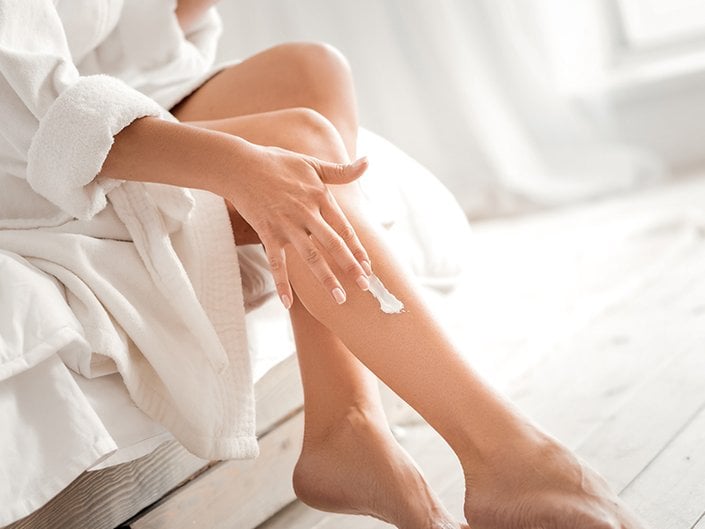
1. Exfoliate With a Body Scrub
One of the most common causes of rough, bumpy skin is not exfoliating often enough. Dead surface skin cells can cause your legs to feel rough, and this buildup needs to be sloughed away. Doing so with a scrub can immediately leave your legs feeling softer and smoother.
To avoid irritating your skin, we suggest opting for a gentle, hydrating scrub. Try the Youth to the People 10% AHA + Yerba Mate Smoothing Energy Body Scrub, which contains both finely-milled olive seed powder and alpha-hydroxy acids in its formula. Apply the creamy polish to wet skin and massage it on in a circular motion to help buff away dead skin cells. Then, leave it on for about one to two minutes before rinsing and proceeding with the remainder of your shower routine. Keep in mind that you don’t need to use this—or any other—scrub daily to get smooth legs. Twice a week is usually sufficient.
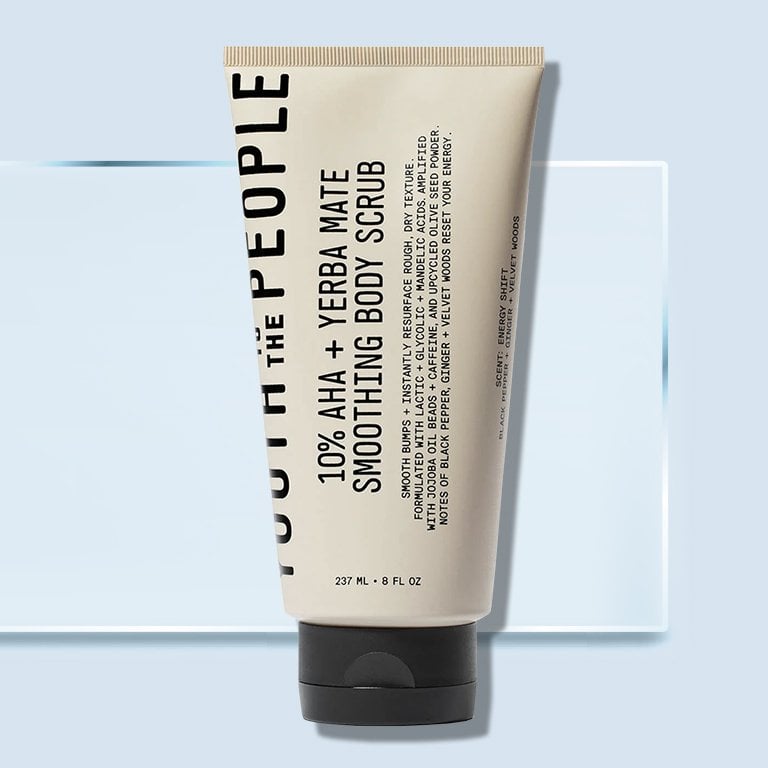
2. Try Dry Brushing
While we love body scrubs, it’s not the only way to achieve softer skin. If you’re wondering how to get smooth legs without adding another product to your in-shower lineup, consider snagging a dry brush next time you hit the store. These brushes feature stiff bristles that help exfoliate the skin for a smoother, softer texture. As the name suggests, they’re meant to be used when the skin is dry (so you could even do it while binge-watching your favorite show on the couch).
To dry brush your body, start at your feet and begin buffing the brush over your skin, using small circular motions. Continue the process, moving up your body as you go. Note that you don’t want to use too much pressure, as doing so could irritate your skin. It’s also a good idea to avoid exfoliating with a scrub or chemical exfoliant within the same day—you don’t want to overdo it.
3. Use a Hydrating Body Wash
When you hop in the shower, reach for a mild body wash that’s infused with hydrating ingredients such as skin-friendly oils, ceramides, or hyaluronic acid. There are plenty of great options out there, but we’re partial to the Youth to the People Superfoods + Niacinamide Body Cleanser. It’s uniquely formulated to help support the skin’s natural moisture barrier—and it boasts a truly divine scent with notes of fresh greens, cedarwood, and spicy black pepper. The luxurious-feeling cleanser is suitable for all skin types and can be used daily—or however often you wash up—as part of your leg care routine.

4. Take Cooler Showers
We know how relaxing hot showers and baths can be, but those high temps aren’t doing your skin any favors. According to the American Academy of Dermatology, showering in hot water can strip your skin barrier, dashing your dreams of having silky-smooth legs. Your shower doesn’t have to be freezing—but if your bathroom is full of steam when you step out, it may be too hot. Turn down the dial to lukewarm to help avoid drying out your skin.
5. Pick The Right Razor
If you shave, you’re probably intimately familiar with the fact that shaving with a dull or low-quality razor can leave you facing a host of rough (and itchy!) razor bumps the next day. Using a safety razor (which boasts a single blade) is often the gentlest approach, but it does take some getting used to. If you want to stick with a traditional razor, you’ll want to look for one that has a hydrating strip, as this provides slip and can help minimize the chance of developing razor burn. It’s also a good idea to opt for four- or five-blade razors rather than flimsier two-blade varieties. If you need a recommendation, we’re big fans of the Billie Razors, which feature five blades surrounded by a moisturizing aloe strip for a smooth, close shave.
6. Use Shaving Cream
Once you’ve selected your ideal razor, you’ll want to pick a shaving cream to go with it. It may seem like an unnecessary step, but it’s a must if you’re after smooth legs. These moisturizing formulas help reduce friction between the razor and your skin, allowing for a closer shave and reducing the risk of razor burn (or worse, cuts and nicks). We suggest reaching for a fragrance-free formula, particularly if you have sensitive skin, as fragrance can be irritating for some.
7. Shave With Care
When you’re shaving your legs, do so with caution—going too quickly can irritate your skin and result in razor burn. Experts recommend shaving with the grain (in other words, in the direction of hair growth) and rinsing your razor thoroughly between each pass. Following the proper technique also helps reduce the risk of getting ingrown hairs—which, aside from being an enemy to your smooth leg goals, can also be extremely uncomfortable.
8. Change Your Razor Head
One final shaving-related tip: Remember to change your razor head often. The AAD recommends doing so after every five to seven uses) to keep your shaving routine clean and efficient. Using a sharp razor can help ensure a smooth, close shave, while risking it with a dull razor may leave you more prone to bumps or irritation.
If you’re using a safety razor, it’s a good idea to consider changing the blade about once a week. While this totally depends on how often you shave, a safety razor blade can last up to five to seven shaves. Even if you do forget, you’ll notice when that close comfortable shave doesn’t feel so close and comfortable anymore.
Finally, keep in mind that you don’t have to shave at all. Waxing is one great method for getting smoother legs (plus, it lasts longer than shaving). You can also opt to forgo hair removal entirely—it’s entirely your call.
9. Moisturize Daily
It may seem obvious, but if you’re wondering how to get silky smooth legs, moisturizing is key. As we mentioned earlier, dryness is a common cause of rough-feeling skin—replenishing lost moisture, meanwhile, can help improve the look and feel of the skin on your legs.
If dryness is a concern that you frequently struggle with, we suggest opting for a rich, nourishing body cream or butter. We suggest the Youth to the People Superberry Firm + Glow Dream Body Butter, which is formulated with jojoba oil, shea butter, and cupuaçu butter and delivers up to 48 hours (!) of hydration. Those who favor lighter moisturizers—or who want an option suitable for hotter, stickier weather—can reach for a lotion, like the Youth to the People Superfood Hand + Body Lotion With Plant Butters. It’s suitable for all skin types and absorbs quickly with a non-greasy feel (bonus: the fragrance is the same as the body wash mentioned above).
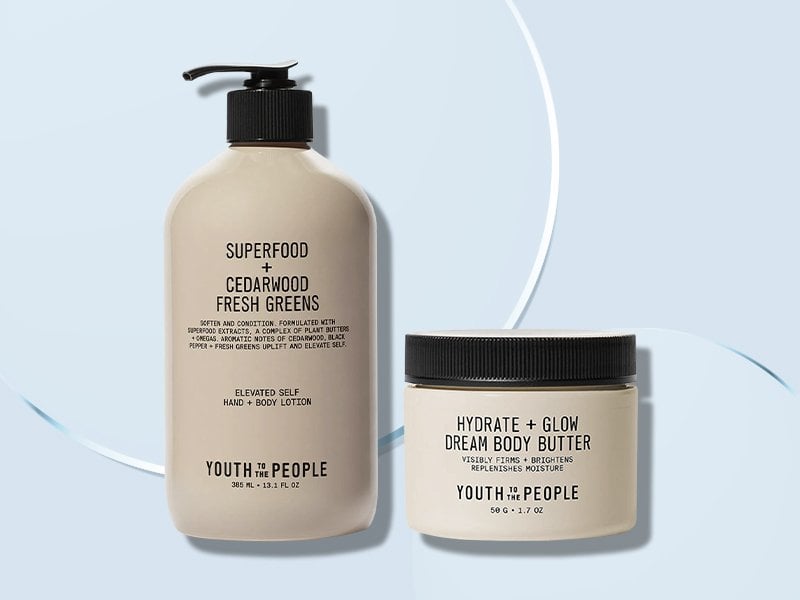
10. Try a Body Oil
Those seeking an extra-luxurious addition to their leg care routine may want to consider adding a body oil to their lineup. Like a moisturizer, body oil can help hydrate, smooth, and soften the skin. Another bonus? Many can be layered with your favorite body cream for a one-two punch of lasting hydration.
If you’re wary of feeling greasy, we suggest giving Kiehl’s Creme de Corps Nourishing Dry Body Oil a try. The fast-absorbing oil sinks into skin and leaves it velvety smooth—without any greasy residue. Plus, you can spray it on for an easy, mess-free application.
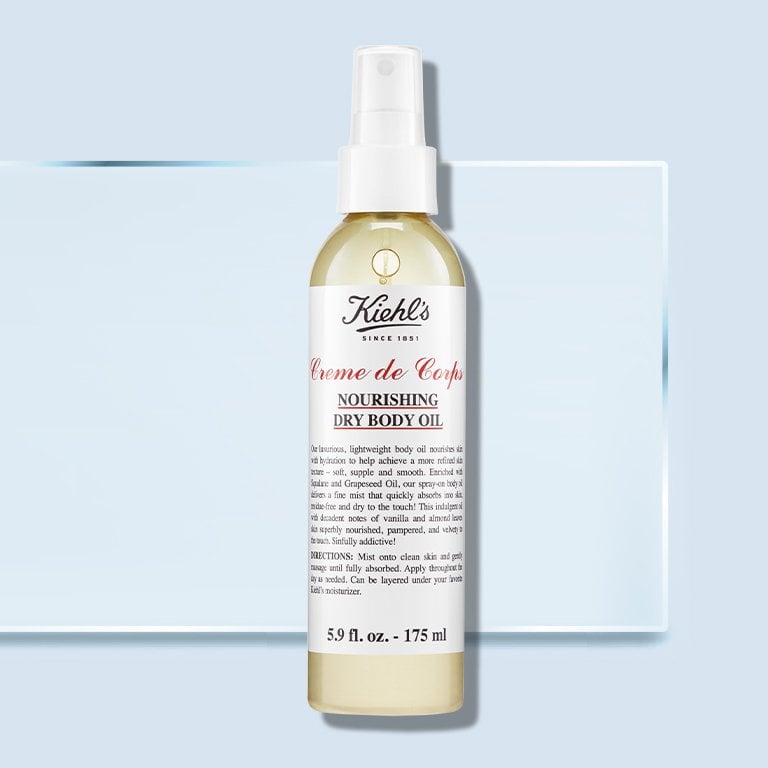
11. Always Use Sunscreen
Your face isn’t the only place that needs UV protection. Skipping sunscreen on exposed areas of skin can leave your skin vulnerable to sun damage. Over time, this damage can leave your skin feeling rough and dry—and contribute to other concerns, like dark spots. If you have dry skin, sun exposure can also exacerbate symptoms like flaking or cracking. (Read: the opposite of smooth legs).
If you’re wearing anything that exposes your legs, apply a sunscreen with an SPF of at least 30 before heading outdoors, and reapply at least every two hours. Try the La Roche-Posay Anthelios Lotion Spray Sunscreen SPF 60, an alcohol-free and non-greasy formula that works for most skin types. If you do have chronically dry skin, consider a creamier formula, such as the La Roche-Posay Anthelios Melt-in Milk Body Face Sunscreen Lotion Broad Spectrum SPF 100, which contains vitamin E and glycerin.
Remember that sunscreen is only one aspect of sun protection. To shield your skin from harmful UV rays, you’ll want to follow other usn protection measures as well. The United States Food and Drug Administration (FDA) recommends wearing protective clothing, seeking shade when possible, and avoiding direct sunlight at midday, when the sun’s rays are strongest.
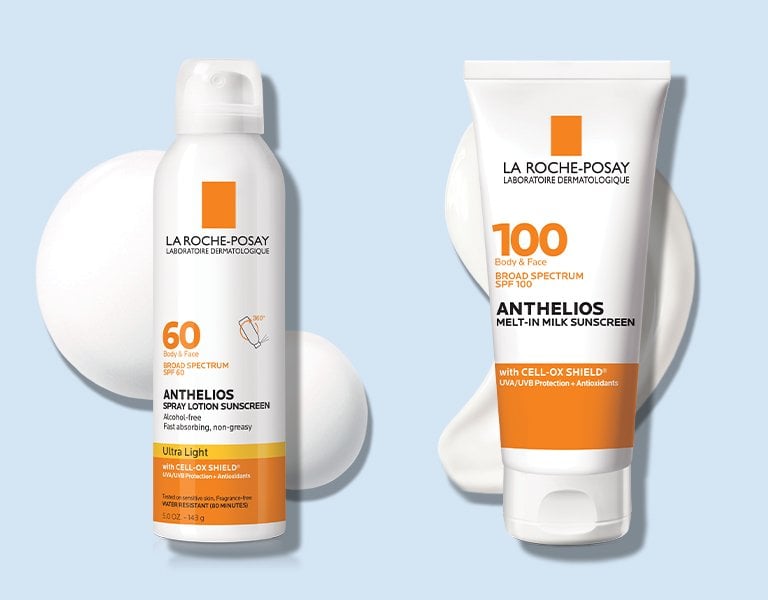
12. Target Breakouts
Acne tends to develop on the face, chest, and upper back, but that doesn’t mean those are the only places a breakout can appear. Getting spots on your legs or butt (lovingly dubbed “buttne”) is also relatively common. If you do notice a breakout rearing its head, don’t pick at it or pop it—doing so can only make matters worse. Instead, apply a targeted spot treatment to the area or use a pimple patch to help protect the spot.
13. Try Self-Tanner
Ever thought that your skin looks better with a bit of a tan? You’re not imagining things: The slight glow of a sun-kissed bronze can make your skin look smoother and more even. Of course, we don’t recommend sitting out in the sun to get that glow. Instead, reach for a self-tanner. We share a few of our favorites—and explain how to use them—in our article A Simple, Step-By-Step Guide on How to Use Self-Tanner.
14. Visit a Dermatologist
If you’re following all of the above advice and still find yourself wondering how to get smooth legs without bumps, breakouts, or dry patches, consider consulting a board-certified dermatologist. They can help determine what’s causing your skin concerns and work with you to develop a plan that addresses your needs.
Next Up: Keratosis Pilaris: Everything You Need to Know About the Bumps On Your Arms
Read more
EXPLORE BY TOPICS AND BRANDS
- body-care
- Legs
- video-embed
- Embedded Video
- La Roche-Posay
- CeraVe




























